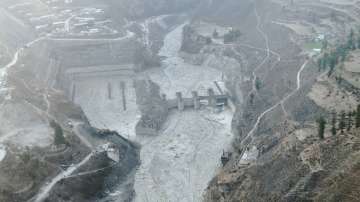In the aftermath of the Uttarakhand disaster, Delhi is likely to face water shortage for few days as water treatment plants are working at reduced capacity.
According to the Delhi Jal Board vice-chairman and AAP MLA Raghav Chadha, turbidity had increased to unprecedented levels of 8,000 Nephelometric Turbidity Units (NTU). The normal seasonal concentration is less than 100 NTU. Debris, silt and mud in the water are behind high NTU.
The DJB's Sonia Vihar and Bhagirathi Water Treatment Plants are working at reduced capacity. This could affect water supply in parts of South, East and North East Delhi. Chadha, however, assured that necessary measures including deployment of water tankers were being made to meet the shortage of supply.
“In the aftermath of the Uttarakhand disaster, turbidity in raw water fetched by Delhi from the Upper Ganga Canal has increased to unprecedented levels. As a result, Delhi Jal Board’s Sonia Vihar and Bhagirathi water treatment plants are currently operating at reduced capacity. Water supply in parts of South, East and Northeast Delhi is likely to be affected,” Chadha said.
The glacier burst in Uttarakhand's Chamoli district led to flash floods. Over 50 people have lost their lives so far even as the search operations to locate more than 150 are still underway. The incident had taken place on February 7.
READ MORE: Uttarakhand calamity: Three more bodies recovered as rescue operations continue, toll climbs to 53
Latest India News

